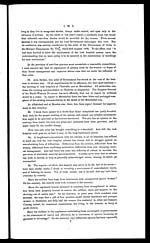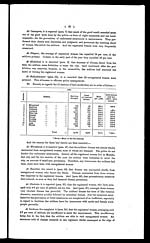Medicine - Institutions > Lock hospitals > Annual report on the working of the lock hospitals in the North-Western Provinces and Oudh > 1882
(336) Page 26
Download files
Individual page:
Thumbnail gallery: Grid view | List view

( 26 )
recorded, favouring the belief that the endeavour is unworthy of encouragement—
Good in this direction to be looked for, only from measures inducing change in the
mode of life and moral nature of the soldier.
Has anything been done to ensure that vigorous medical management once estab-
lished should be maintained—that the Medical Officer of the European soldiers
should manage the women also ? On the contrary, nothing has been more marked
than the frequent change of Medical Officer, selected apparently upon no grounds of
especial fitness. Nothing unusual in the Doctor of a native regiment, or the Civil
Surgeon, having the management of the women.
96. Against such array of unhealed difficulties, successful results are not to be
expected. And, as usual, the venereal evil has continued to prevail amongst the
soldiers during the year of report.
The mean ratio of admissions to hospital for venereal disease, amongst the Euro-
pean garrison of the province, for the five years previous to the opening of lock
hospitals, was 278·2 per 1,000 of daily average strength. The ratios for the five years,
1878-82, have been 295.0, 257.3, 262.8, 231.6, and 263.7. The figures witness to a
very little gain of better result, from the operation of the lock hospitals.
The mean ratio of the five years is 262.0, so that the outcome of all the labour and
expenditure of these years, in this direction, has resulted in a mean decrease of venereal
complaints amongst the soldiers, of just 16.2 per 1,000 of daily strength, as compared
with their prevalence before lock hospitals were opened.
97. Although the general results for 1882 are so unfavourable, it is not right to
conclude that this bad result is equally distributed throughout the stations. On the
contrary, in 1882, the hospitals are fairly divisible into a list of seven showing good
results, and a list of 11 showing bad results.
98. First, as regards the seven stations of good results, they are, in order of success.
1882.
| No. | Station. | Garrison strength. |
Cases of ve- nereal disease. |
Ratio per 1,000. |
Ratio before lock hospitals opened. |
| 1 | Jhánsi | 300 | 31 | 103.3 | 310.0 |
| 2 | Fatehgarh | 255 | 31 | 121.5 | ... |
| 3 | Fyzabad | 769 | 102 | 132.6 | 287.0 |
| 4 | Cawnpore | 944 | 131 | 138.6 | 324.0 |
| 5 | Sitapur | 428 | 64 | 149.5 | 342.0 |
| 6 | Allshabad | 1,092 | 172 | 157.5 | 307. 0 |
| 7 | Sháhjahánpur | 379 | 79 | 208.4 | 364.0 |
| 4,167 | 610 | 146.3 | 312.3* |
* Note. —Mean of the six stations.
And the reasons for these good results are thus recorded.
At Jhánsi, it is reported (para. 73) that the police system for the prevention of
unlicensed intercourse was strictly carried out. And (para. 74) that the good result
was due to this cause.
At Fatehgarh, it is reported (para. 84) that the number of registered women was
considerably increased. Until, indeed, their monthly average number was equal to
14 per cent, of soldiers present.
At Fyzabad, it is recorded (para. 36) that the registered women live in a com-
fortable well-built brothel, which is kept in good sanitary condition. Each room pro-
vided with basin, towel, and soap for ablution purposes. That the entry of soldiers
to the city was prevented by a regimental patrol, and all unregistered offenders
were arrested by the police.
Set display mode to: Large image | Zoom image | Transcription
Images and transcriptions on this page, including medium image downloads, may be used under the Creative Commons Attribution 4.0 International Licence unless otherwise stated. ![]()
| India Papers > Medicine - Institutions > Lock hospitals > Annual report on the working of the lock hospitals in the North-Western Provinces and Oudh > 1882 > (336) Page 26 |
|---|
| Permanent URL | https://digital.nls.uk/75111879 |
|---|




